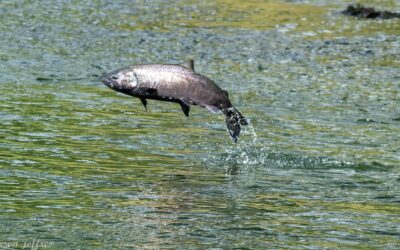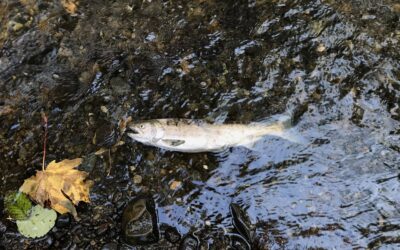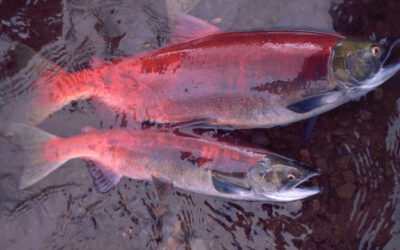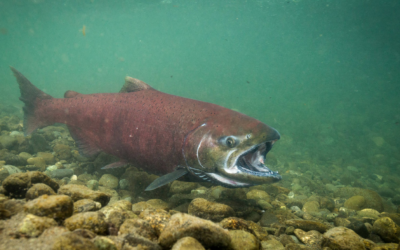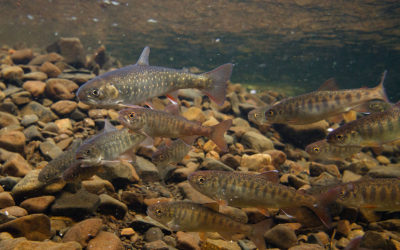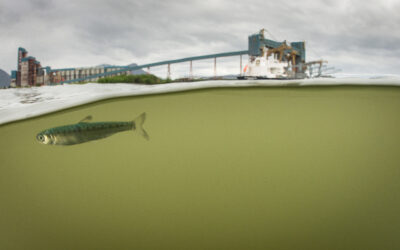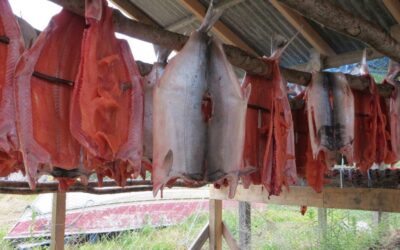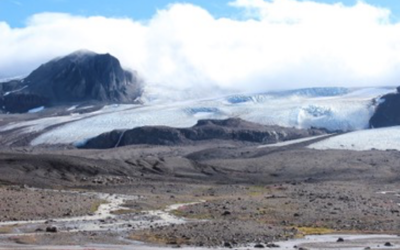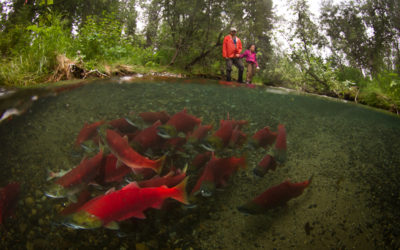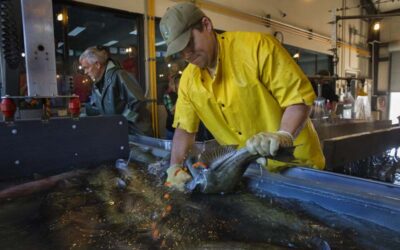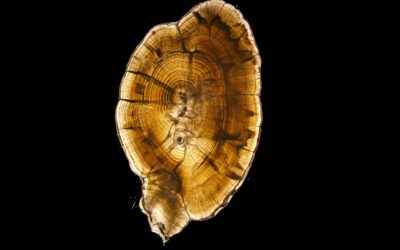Science Spotlights
All Science Spotlights are also available in Russian. Click above to toggle view.
Rare salmon phenotypes could serve as key to climate change resilience
The maintenance of the relatively rare ‘late’ juvenile migration type may be the key to species preservation and recovery in the case of Chinook salmon in the warming Sacramento River…
Coho mass die-offs caused by tire chemical underscores growing impacts of urbanization on Pacific salmon
In recent years mortality rates of pre-spawning coho salmon in some watersheds in Washington state have periodically spiked during summer and fall…
Effects of logging on salmon habitat may take decades to fully emerge
Logging activities have been conducted along the West Coast of North America for more than a century, yet little is known about the enduring impacts of large-scale removal of riparian forests on freshwater systems…
Alaskan salmon have become smaller over the past half-century
The trends noted by Indigenous people, scientists, managers, and fishers within their own systems are not aberrations: Alaskan salmon are getting smaller throughout the entire state…
No ‘smoking gun’ for Alaskan Chinook declines
A new study has challenged the view that the past decade of declines in the productivity of Alaskan Chinook salmon populations has been driven primarily by adverse conditions within their shared marine environment…
Habitat refuges crucial in streams with low summer flows
Although human-driven changes in environmental conditions pose a threat to all of California’s remaining salmon runs, stocks that return to and reproduce in intermittent streams – those that flow only during the rainy months of the year – may be at particular risk…
Review provides body of evidence that estuary development can put juvenile salmon at risk
A recent literature review—the first to systematically review studies of the impacts that estuary developments may have on juvenile salmon—has identified multiple activities and stressors that are likely to negatively impact salmon…
Giving up a little harvest can have large conservation benefits in a mixed-stock salmon fishery
More than a dozen Chinook salmon populations, each with unique population dynamics, exist in the Kuskokwim River, Alaska; home to the largest Chinook subsistence fishery in the world…
Glacier retreat will affect salmon habitat
Glaciers in western North America are retreating rapidly due to climate warming, with potential implications for downstream Pacific salmon habitat…
Human disturbances altering sockeye life-history
Analysis of long-term datasets on the ages and sizes of sockeye salmon from Alaska’s Bristol Bay reveals changes in juvenile development and seaward migration timing, due to increased freshwater prey abundance triggered by climate warming…
Well-intentioned transport of hatchery fish may erode salmon biodiversity
Since the 1980s, hatchery-reared Chinook salmon in California’s Central Valley have been trucked increasing distances from source hatcheries to circumvent survival bottlenecks…
Shifting habitat mosaics stabilize salmon production
Variation in how habitats respond to changing environmental regimes influences the locations within river basins where fish production is highest from year to year, which affects fisheries yields, management strategies, and conservation efforts…

